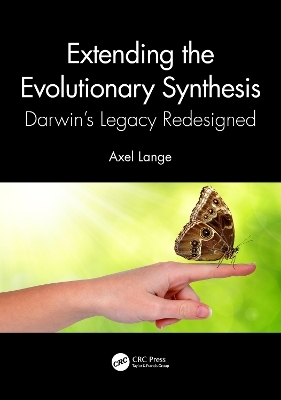
Extending the Evolutionary Synthesis
CRC Press (Verlag)
978-1-032-37689-9 (ISBN)
The theory of evolution is itself evolving with new findings and changes in the fundamental underlying concepts. It is true that today's synthetic theory, which goes back to Darwin, is persistently successful. However, it offers no convincing explanation to many questions, some examples of which are as follows: What forms of inheritance exist besides genetics; how complex variations, especially evolutionary innovations such as bird feathers and turtle shells, arise; how the environment affects the evolution of species and is changed by them simultaneously; and why the evolution of birds, corals, and human culture is not explainable by natural selection alone.
Scientific findings of the last decades require continuous rethinking and integration of new data and concepts into the theory of evolution. This comprehensibly written and excellently researched book provides exciting new insights into the Extended Evolutionary Synthesis using fascinating new examples from evolutionary biology.
Key Features
Comprehensively explains the Extended Evolutionary Synthesis
Understandably written for a broad audience
Includes interviews with world-leading evolutionary biologists
Reviews the historical development of evolutionary theory with explanations of open, unanswered questions
Explains the new concepts with powerful illustrations
Related Titles
Bard, J. Evolution: The Origins and Mechanisms of Diversity (ISBN 9781032138480)
Johnson, N. Darwin’s Reach: 21st Century Applications of Evolutionary Biology (ISBN 9781138587427)
Axel Lange, PhD, graduated from the Jesuit Kolleg St. Blasien, a Jesuit school in the Black Forest, Germany. He then studied economics and philosophy at the University of Freiburg. Professionally, he worked in sales and marketing management in IT before his deep interest in evolutionary theory led him to completely reorient himself in biology. Lange's first book on Evo-Devo and the Extended Evolutionary Synthesis, published in 2012, provided the basis for the University of Vienna to sign a PhD contract with him. At the Department of Theoretical Biology there, Lange studied biology and researched the evolutionary limb development of vertebrates and – the evolutionary point of view – polydactyly, which is the heritable formation of supernumerary fingers and toes in newborns. A new finger has thousands of bone, nerve, muscle, skin and blood vessel cells; yet several such fingers and toes appear functionally sometimes in a single generation in the embryo and even pass on in varying numbers. Standard evolutionary theory cannot explain the mechanisms for this. So how does this phenotype arise? This was the question that preoccupied Lange. His publication with Gerd. B. Müller on humanity's knowledge of polydactyly in development, heredity and evolution, from antiquity to the present day, appeared in March 2017 in the American journal The Quarterly Review of Biology. Further publications deal with the self-organizing capacity of the limb with simultaneous variation in digit numbers. The biologist, who received his PhD with distinction in 2018, lectures on complex, epigenetic evo-devo processes at home and abroad. The future of human evolution in conjunction with artificial intelligence is also one of his favorite lecture topics. In the course of studying the Extended Evolutionary Synthesis, Lange got to know internationally renowned researchers personally. He loves the mountains, is passionate about playing romantic piano music and lives as an author and science journalist in the south of Munich. Lange has three grown-up children.
1 Darwin’s millennium theory and Bateson’s counter model
2 The Modern Synthesis: The standard model of evolution
3 Evo-devo—The best of both worlds
4. Selected evo-devo research results
5 The niche construction theory
6 Extended Evolutionary Synthesis
7 Theories on the evolution of thinking
8 The evolution of humankind in our (non)biological future
9 More than one theory of evolution–A pluralistic approach
10 The players of the new thinking in evolutionary theory
| Erscheinungsdatum | 10.07.2023 |
|---|---|
| Zusatzinfo | 4 Tables, black and white; 13 Line drawings, color; 2 Line drawings, black and white; 57 Halftones, color; 11 Halftones, black and white; 59 Illustrations, color; 24 Illustrations, black and white |
| Verlagsort | London |
| Sprache | englisch |
| Maße | 178 x 254 mm |
| Gewicht | 740 g |
| Themenwelt | Naturwissenschaften ► Biologie ► Botanik |
| Naturwissenschaften ► Biologie ► Evolution | |
| Naturwissenschaften ► Biologie ► Zoologie | |
| Weitere Fachgebiete ► Land- / Forstwirtschaft / Fischerei | |
| ISBN-10 | 1-032-37689-9 / 1032376899 |
| ISBN-13 | 978-1-032-37689-9 / 9781032376899 |
| Zustand | Neuware |
| Informationen gemäß Produktsicherheitsverordnung (GPSR) | |
| Haben Sie eine Frage zum Produkt? |
aus dem Bereich


